
Image Credit: Shutterstock/REDPIXEL.PL
Midway through a recent SEO (Search Engine Optimization) campaign, our client emailed us with a query. It was along the lines of: Thanks for the results, but why do we write these blog posts? At this point, I had been writing, optimizing, and uploading fortnightly blogs to their site for almost a year. Mildly frustrated, I wondered if I had failed to explain the marketing science that goes into blogging.
Here are some of the metrics for just one of the blog posts I put together for the client:
- Almost 4.5K pageviews over a twelve-month period
- 16+ page one positions for a combination of short- and long-tail keywords
- Regularly featuring in SCRBs (Special Content Results Blocks), including featured snippets
A resoundingly successful blog, but how did we get there? And, to paraphrase the client’s question, what is the point of other blog posts that don’t achieve the same prominence in valuable SERPs (Search Engine Results Pages), nor provide that level of traffic?
This article on the marketing science behind blogging should explain all that. It is pitched as a short how-to guide for writing scientific blog posts, with a focus on the quantitative side of the science content creation process.
Why Write Scientific Blog Posts?
Content is one of the cornerstones of SEO. Whether you are writing in a B2B or B2C space, you will fail to rank well for valuable search terms without high-quality written content on your site. A dedicated blog section allows you to deliver a steady stream of optimized content to your users, subsequently building expertise, authority, and trust (E-A-T). Achieving this requires a solid understanding of the marketing science underlying any SEO strategy.
As in the stellar client example above, each new post has the potential to become a large traffic driver for your site, acquiring high volumes of unique users and keeping them engaged for longer. Yet even the less successful posts will lend authority to your key landing pages through internal linking. This can be taken even further by optimizing for user search intent: Tailoring blog posts to specific moments along the customer journey to maximize the chance of organic visitors turning to goal completions. This is where we see how marketing science factors into blogging.
How to Write Blog Posts Based on Sound Marketing Science
Hopefully, you now understand why blog posts are important for your SEO strategy, so let’s move onto how you can apply these marketing science principles to the content writing process. Search Engine Land has a useful tool for visualizing the important elements that Google considers when ranking content in SERPs. The aptly-named Periodic Table of SEO Factors breaks these elements down into individual groups with relevant subfactors – the first of which, is content. According to this tool, content boils down to seven different elements:
- Quality
- Research
- Keywords
- Freshness
- Multimedia
- Answers
- Depth
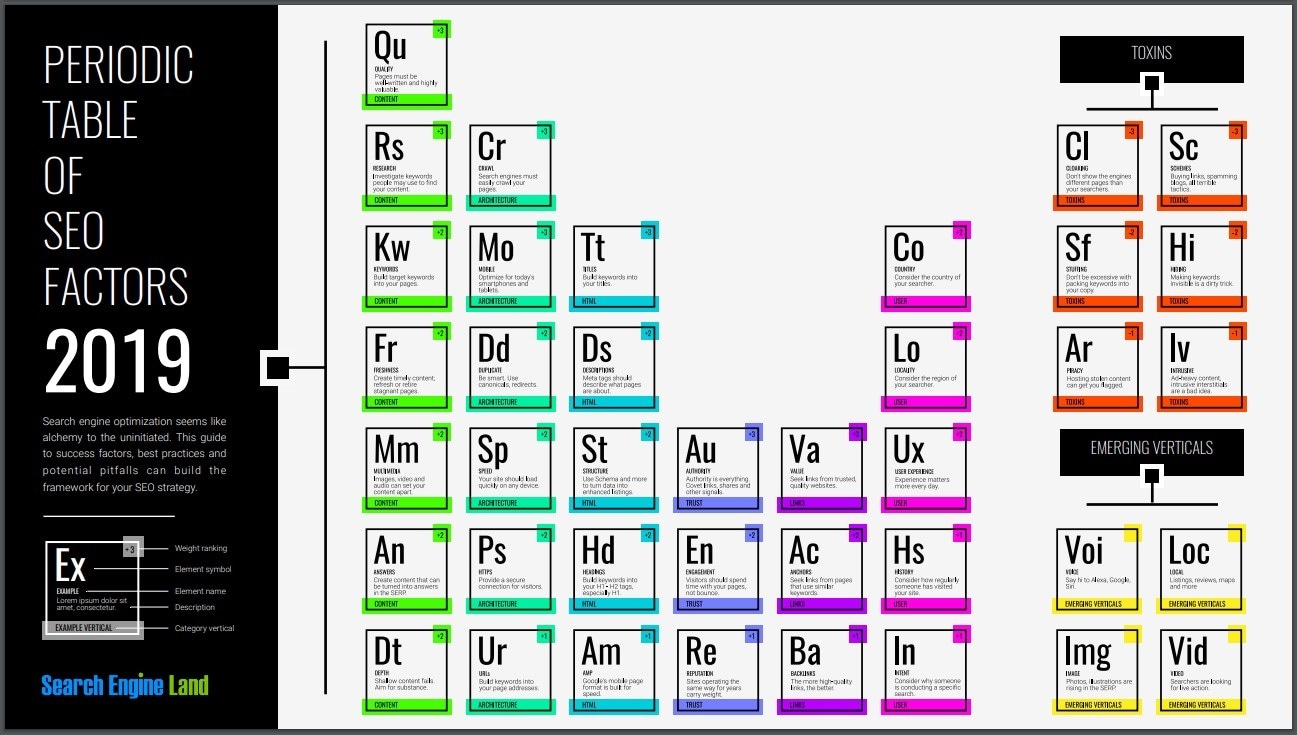
Figure 1: The Periodic Table of SEO Factors (Updated for 1029), Search Engine Land
Understanding these marketing science principles and best practices is the first step to writing consistent and effective content for your site. To build on that, you need to set up the framework of your overall SEO strategy: Keyword research.
Keyword Research & Page Optimisation
This is the process of exploring the search terms that are relevant to your site. Some will come naturally. For example, AZoNetwork offers marketing science services to scientists, so the term “marketing science” is probably a good place to start. Others will require more research. Knowing your clientele – understanding their verbiage and the queries they may be typing into Google – is another viable starting point.
Whether you begin ad hoc or use a third-party tool, these initial stages will help you generate a list of potential keywords – not the final report. These are contenders for optimizing your site and providing a foundation for your blog writing strategy. Before you begin making changes and building content plans, you should first establish the value of these keywords.
What is their search volume? Is the SERP for that keyword string relevant to your site?
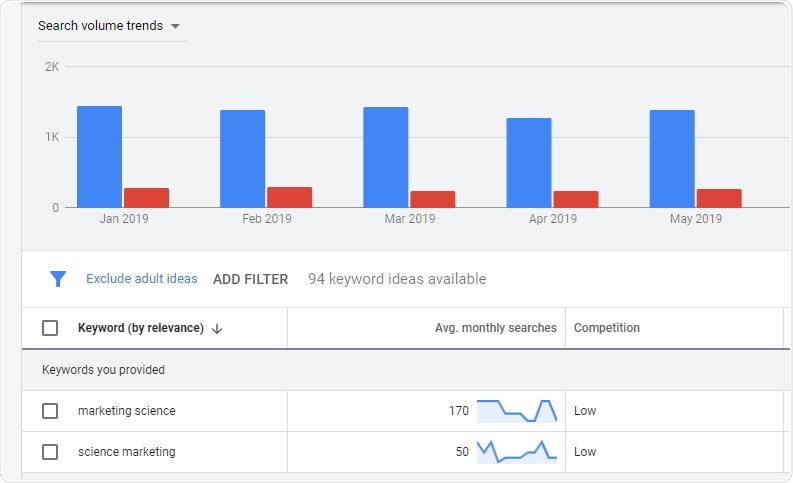
Figure 2: Screenshot from Google Keyword Planner.
Asking these questions will give you a quantitative measure of the value of your initial keywords and will probably force you to re-evaluate some of the potential contenders. If you must remove some, be sure you analyse the replacements too. Done properly, the process of circling in on a final keyword list should resemble the scientific method in its circular procedure of research > testing > analysis. That is why we call it marketing science.
Once you have settled on a final list of high-value keywords with a mix of short- and long-tail search terms, you can start building a long-term content strategy. This involves assigning specific keywords to pages via the on-site meta data – but how does it factor into blog writing?
Templating
The exhaustive marketing science of keyword research forms the foundation of your entire content plan. For instance, you should prescribe at least one keyword to every scientific blog that goes live on your site. You can then use this keyword as an anchor within the body of the text which links back to the pre-assigned keyword page.
Already you can see how regimented the creative process becomes when writing SEO-friendly content, and that is only factoring in one of the elements we discussed above. How can you make sure your content is going to satisfy each of these seven requirements ahead of the fact, to minimize wasted efforts? The answer: Build a master template that essentially serves as an SEO reference standard for all the content that you write.
AZO Top Tip
Consistency is key when it comes to keywords. Make sure your target term appears in the page title, the meta description, and consistently throughout the text. Use prominent CTAs (Calls to Action) to foreground the keyword and link back to your optimized landing page.

Figure 3: Example blog template
This master template provides a sure-fire structure that allows you to tick off all the important elements, from Google’s perspective, before you even start writing your blog. Here are some suggested elements you should include:
- Meta title and meta description: Including your keyword/phrase at least once.
- Page URL: Optimised for legibility.
- Keyword focus: In our case; “marketing science”.
- Keyword search intent: We discuss this in more detail below.
- List of internal links: Again, more on this below.
- Intended word count: Useful for time-management and controlling your keyword density.
Search Intent
Hopefully, most of those template sub-headers are familiar and you have some understanding of why they are important. However, one aspect that can confuse even experienced marketers is search intent. Most people in the industry have relied on Google’s model of micro-moments to understand where users are on the customer journey based on the search terms they use. For example:
- The term “What is marketing science?” is clearly a research query looking for a specific answer. We see this reflected in the SERP with Wikipedia’s marketing science page ranking in position one.
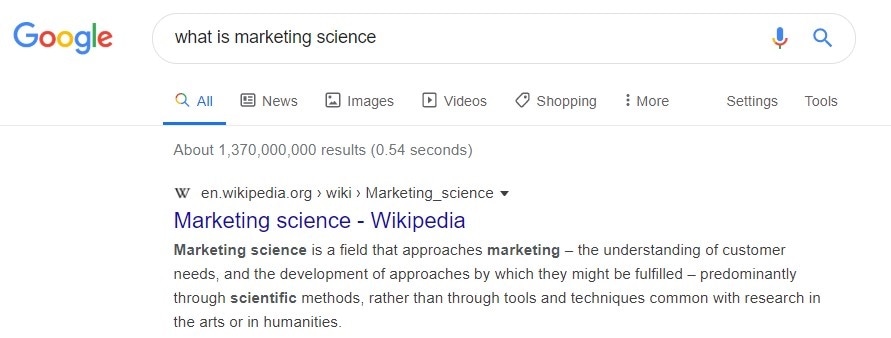
- The term “Marketing science company” corresponds to a deeper understanding, and potentially a more transactional-minded user looking for a service provider. Again, this is reflected in the SERP:
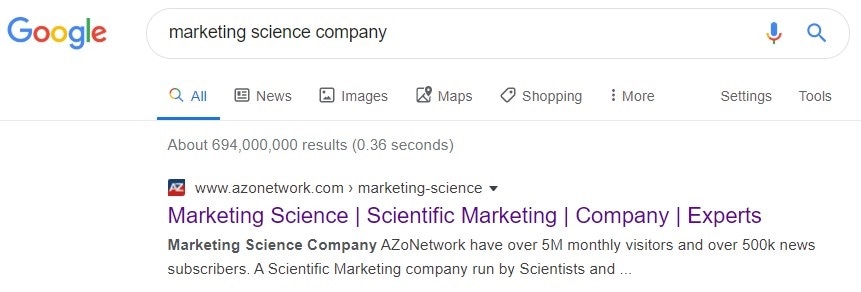
You can sometimes guess the search intent based on the results and the SCRBs (Special Content Result Blocks). This might be enough to inform your blogging approach to increase the relevancy of your content for these search terms.
To really ensure that your blog has the greatest chance of reaching high-ranking page one positions and appearing in SCRBs, you need to diagnose the search intent for each SERP per keyword. This can help you generate the most effective titles, inform your formatting, and determine the multimedia elements that you should embed throughout the post.
AZO Top Tip
Leverage AdWords, Google searches, and third-party tools to find semantically-related search terms and phrases to increase the likelihood that your post will appear prominently on multiple SERPs comprising your primary keyword with different modifiers.
Internal Linking
Link-building is an age-old SEO trick and a key component of any successful content creation strategy. The theory is that linking pages allows them to lend equity to one another, while back-linking (one-way hyperlink) drives that value in one direction. Search engines recognize links as a form of promotion, or vote of confidence, between one page and another. Although it is impossible to quantify this value, affectionately referred to as “link juice”, you can measure the impact of backlinking by comparing the traffic and position of a page before and after you open the link.
However, this isn’t a wonder drug. Google has repeatedly devalued link-building tactics through core updates in a bid to tackle sites that peddle poor quality content (link farms, knee-jerk PR firms, etc.). The Google Panda update has repeatedly penalized sites that treated link-building as their be-all-and-end-all of SEO at the expense of quality and relevance.
To put this in context of our “marketing science” Google searches above, if the AZoNetwork marketing science landing page was comprised of thin, poor quality content, it would be unlikely to feature so highly even with a back-link from the highly-authoritative Wikipedia page for the same term. This doesn’t mean that link-building should be consigned to the past; it simply highlights that there is a right and a wrong way to do it.

Image Credit: Shutterstock/astel design
Blog posts are the perfect content format for building internal links that truly add value to your site. Start with your target keyword: Do a site search to find any pages relevant to that term and paste the links into your template. Provided you have optimized your site using the initial research, you should have at least one landing page associated with the keyword focus of your blog post. Next decide on the goal completion that matters most to you (contact form, downloads, etc.) and add that into the template too.
AZO Top Tip
Backlinking from blog posts to landing pages with the same keyword focus is a perfect way of signposting their relevance to related searches. Use the keyword as the hyperlink text in a clearly-defined CTA to ensure consistency and elevate your chances of success.
AZoNetwork: Marketing Science Specialists
Here at AZoNetwork, marketing science carries a double-meaning. Our scientific approach to marketing is applied directly to a variety of scientific industries through a range of content marketing and web services solutions. Hence our coined phrase “Marketing Science – Scientific Marketing”.
Blog writing is just one aspect where marketing science can be applied. We visualize our scientific approach to marketing as a circle of success.
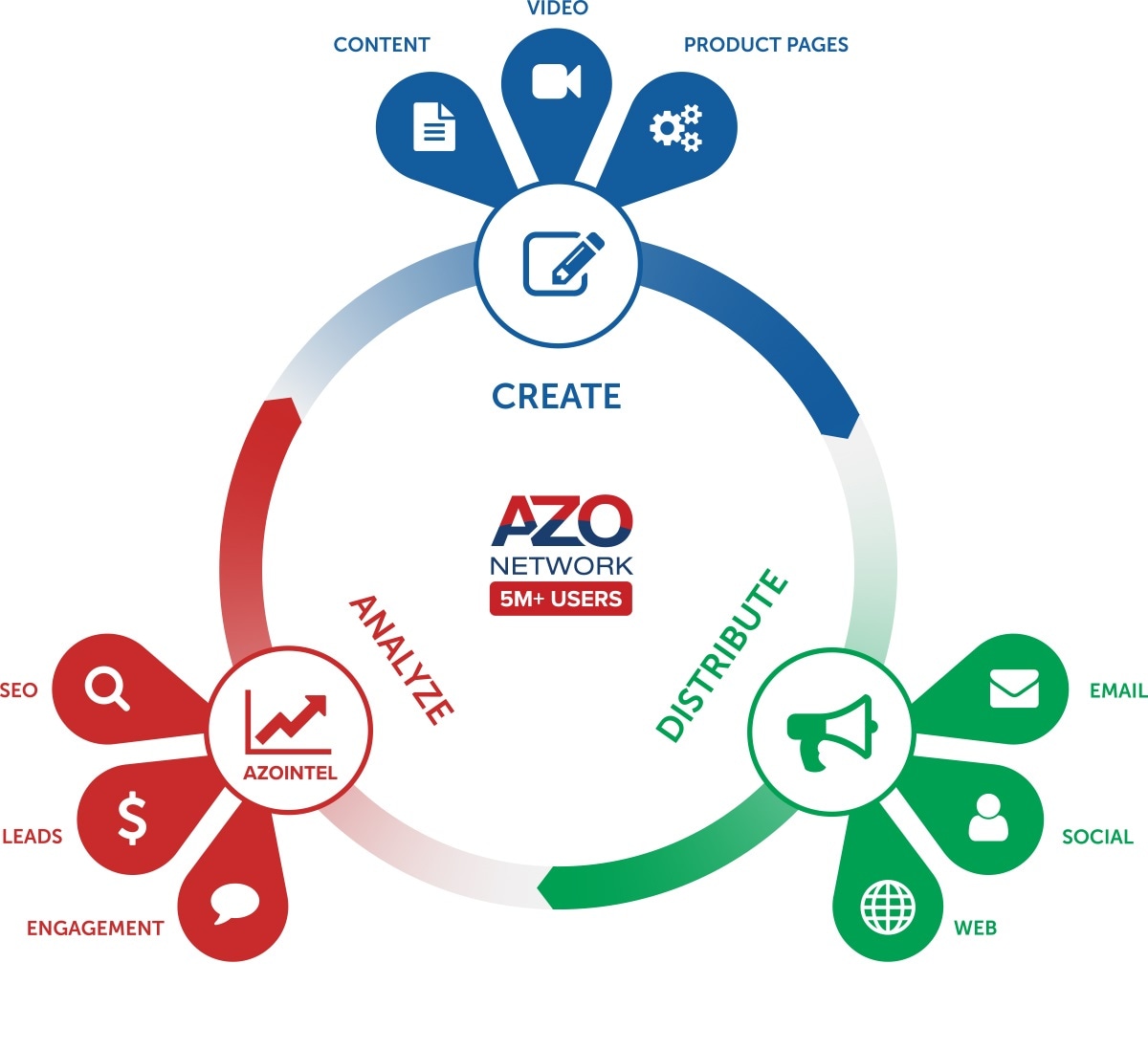
This continuous process is perfectly suited to delivering effective content marketing campaigns to a scientific audience. If you would like to learn more about our approach, please watch our marketing science video. Otherwise, contact us to let us know what you thought about this blog post.